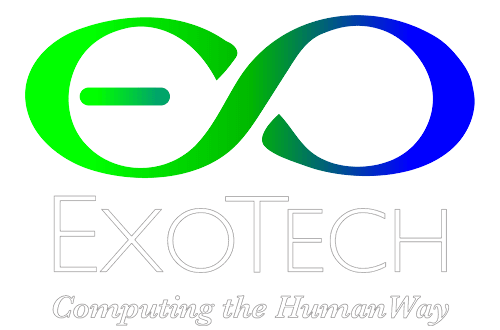
Rick, ExoTech Team Member

The ExoManual 1, Volume One was for me another layer of depth in my education in ExoTechnology. The manual itself is a thoroughgoing tour de force penetration of the foundations and development of the ExoBrain structures and how and why they came to be. I had felt I got a pretty good conception of what our “ExoVocabulary” is talking about and demonstrating in my earlier studies of the 31 Videos some months ago. At several points in those videos, I was quite taken with what then felt like arrivals at new levels of insight into what the computers I have been using really are and why they are such annoying, “high-maintenance” partners in production – and what can be done about it!
The manual, remarkably, beat its own time and set a new record for incremental reduction of complexity and exponential increase in comprehensibility. If the manual weren’t confidential, I would be tempted to give a very clear example in the matter of how the technology goes behind the meaning of symbols which are at the foundations of the “Tower of Babel” confusion which stymies efforts to make a real civilization of our planet and cuts down the use of computers for the vast majority of our populations.
Cultures have passed into history whose legacy of literature and history had become incomprehensible simply because the meanings behind the symbols depicted in their monuments and scrolls had been lost. Only the Rosetta Stone, for example, written in Greek (which was known), and also written in both upper and lower class Egyptian symbols, enabled us to read what we find in the Valley of the Kings and the Book of the Dead. And yet, every language in human history and probably in the entirety of the universe and all time, has had the same pool of meanings as every other language. If you codify those meanings, and their relationships to other meanings in the fields of universal experience and communication, it no longer matters what symbolic language code is used, a machine can be made to operate as people do in relation to those meanings and the benefits of computing can become available to all.
So, just to mention this one major elevation, I found the explanation of how the coding of ExoPonents (like elements of meaning) was accomplished to be one of the most fascinating and enlightening sections of the manual. People have the idea that mastering complexities, like “rocket science” or “brain surgery” require “genius” (by which they mean complexity), when history shows us on the contrary, that brilliance is the ability to master the simplicities of which the greatest truths – of necessity – must be composed. After all, the universe does work, and the cheers and prizes should go to the contributions that bring the most illumination, as those are the ones that are the most useful, those that uplift our civilization and endure.
To mention one other point, the manual is not a difficult read. For one thing, there is a very comprehensive glossary at the end that gives appropriate and adequate definitions for the terms in the text. The ExoManual 1 avoids the tedium and omissions that have in some quarters given technical manuals a bad name. I have other work to do each week and yet managed to fit my reading of the manual in to my work schedule and I know I will enjoy going back and rereading much of it. Granted it is a bit more technical than the instructions on a box of corn flakes but it is substantially less demanding than say the Terms and Conditions of the OS software you’re probably using.
I personally am not a programmer per se. I’ve managed to avoid it, probably because I like logic and am actually pretty good at it. I once applied for a technician job and part of the test for the position involved using a set of logic symbols, and a series of square wave pulses, to devise a logic circuit that would remove every other (every second) pulse. When I turned in my test, the examining engineer said it was better than his own design and was, in fact, the most efficient circuit for that function he had ever seen. But when I built my first PC computer from a kit, I learned every line of the MS DOS with the accompanying manual only to have it become obsolete and be replaced by an even thicker and more obscure succeeding manual which I did not learn as thoroughly. And that was the last time I did that, so the ExoManual 1 is the first in a long time that tells the whole story with elegance. I actually enjoyed its clarity and I’m looking forward to the volumes to come.
